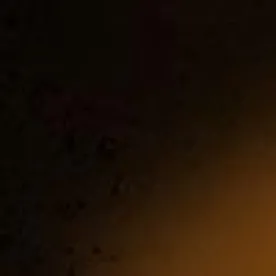Key Takeaways:
-
What Happened: DOE issued a Notice of Proposed Rulemaking to adopt revised definitions of general service lamps and general service incandescent lamps, which would impose strict energy efficiency standards on a wide array of lamps. If adopted, this proposed rule would reverse the Trump Administration’s withdrawal of these revised definitions, which were promulgated near the end of the Obama Administration.
-
Who’s Impacted: Manufacturers, importers, distributors, and retailers of general service lamps.
-
What Should They Consider Doing in Response: Consider whether to submit comments on DOE’s proposed rule regarding the definitions of general service lamps and general service incandescent lamps, as well as a separate proposed rule regarding the applicability of the 45 lm/W “backstop” efficiency standards to such lamps.
The Department of Energy is changing course on lamp efficiency for the second time in the last four years. In the last days of the Obama Administration, the U.S. Department of Energy (“DOE”) published revised definitions of general service lamp (“GSL”), general service incandescent lamp (“GSIL”), and other supplemental definitions, which would have imposed federal efficiency standards on a wide array of lamps. Prior to those new definitions’ effective date, the Trump Administration withdrew the revised definitions. Now, DOE proposes to return to the revised definitions, saying the Trump Administration disregarded Congress’ intent about how best to regulate lamp technology. This change will likely have far-reaching implications for lamp manufacturers and retailers.
Background
As defined by Congress in the Energy Policy and Conservation Act of 1975 (EPCA), general service incandescent lamps (GSILs) are any “standard incandescent or halogen type lamp . . . intended for general service applications,” that “has a medium screw base,” that fits within statutorily defined lumen and operating voltage ranges, and that is not one of twenty-two exempted lamp types. General service lamps (GSLs), in turn, are GSILs or “any other lamps that the Secretary [of Energy] determines are used to satisfy lighting applications traditionally served by general service incandescent lamps.” With the Energy Independence and Security Act of 2007 (EISA), Congress directed DOE to initiate rulemaking procedures to determine whether efficiency standards for GSLs should be amended to be “more stringent” than those that currently apply to fluorescent lamps and incandescent reflector lamps and whether existing exemptions for “certain incandescent lamps should be maintained or discontinued.”
Additionally, the EISA included a “backstop” measure: if the Secretary of Energy “fails to complete a rulemaking” by January 2017, “the Secretary shall prohibit the sale of any general service lamp that does not meet a minimum efficacy standard of 45 lumens per watt,” effective January 1, 2020. The 45-lumen standard is generally understood to be unachievable for many incandescents, and would, therefore, hasten an ongoing transition to LED lamps. The backstop standard is also unusual to the extent that it would apply as a prohibition on sale, while most other appliance and equipment standards enforced by DOE apply to import and manufacture, rather than sale. As a result, the backstop standard not only impacts lamp manufacturers, but also the retailers who market such lamps.
The Obama Administration in January 2017 promulgated final rules revising the GSL and GSIL definitions to no longer exempt five categories of specialty incandescent lamps (rough service lamps, shatter-resistant lamps, 3-way incandescent lamps, high lumen incandescent lamps, and vibration service lamps), incandescent reflector lamps, or a variety of decorative lamps (T-Shape, B, BA, CA, F, G16-1/2, G25, G30, S, M-14 of 40W or less, and candelabra base lamps). The Obama Administration, however, did not initiate rulemaking with regard to the efficiency standards themselves because an appropriations rider prevented it from doing so. When the Trump Administration withdrew these revised definitions, it also determined that the backstop provisions did not apply because DOE had chosen only to maintain the currently effective list of exemptions, not to maintain, amend, or eliminate the GSL and GSIL efficiency standards.
Returning to the Revised Definitions
With its latest Notice of Proposed Rulemaking, DOE proposes to amend the definitions of GSL and GSIL as previously set forth in the January 2017 final rules, and to adopt the supplemental definitions established in the January 2017 Final Rules, which relate to the proposed definitions of GSL and GSIL. DOE has preliminarily determined that the definitions as proposed are consistent with the congressional direction to decide whether existing exemptions for “certain incandescent lamps should be maintained or discontinued.” DOE also says that the proposed definitions further the purposes of Executive Order 13990, “Protecting Public Health and the Environment and Restoring Science to Tackle the Climate Crisis.” 86 Fed. Reg. 7037 (Jan. 25, 2021). The NOPR does not address whether or not the energy efficiency standards for GSLs (including GSILs) should themselves be amended, but rather addresses the scope of lamps to be considered in such a determination.
The NOPR also does not address the applicability of the 45 lm/W backstop requirement. In May 2021, DOE published a separate Federal Register notice re-evaluating and requesting information regarding its prior determination that the Secretary of Energy was not required to implement the statutory backstop requirement for GSLs. 86 Fed. Reg. 28001 (May 25, 2021). This request for information solicited information from the public regarding the availability of lamps that would satisfy a minimum efficacy standard of 45 lm/W, as well as other information that may be relevant to a possible implementation of the statutory backstop. If DOE does reverse its determination and finds that the backstop standard applies, it is possible the Department will allow regulated businesses additional time to come into compliance, rather than immediately prohibiting distribution o non-compliant lamps.
Next Steps
DOE will accept comments, data, and information regarding this proposed rule until 60 days after the notice is published in the Federal Register. DOE will also host a public hearing via webinar regarding the proposed rule on Thursday, September 30, 2021, from 10:00 a.m. to 4:00 p.m.; the public may register for this webinar here.






 />i
/>i

